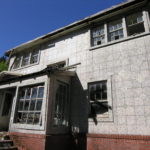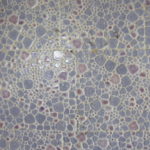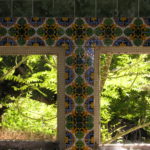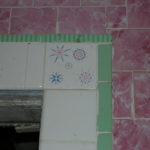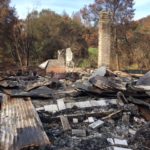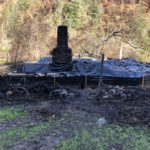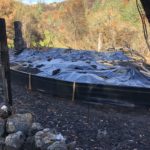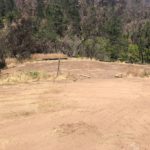July 18, 2018
Posted in: News Articles
Post-fire cleanup of the Pelm House
When Ag + Open Space acquired 461 acres of land from John McCullough in 2009, it came with an interesting old building known as the Pelm House. This was the previous home of the Pelm family, who had moved here from Russia around 1945. At the end of World War II, Peter Pelm and his wife, Frances, fled from Russia to China, then to San Francisco, before finally making their way up to Sonoma County to begin a new life in agriculture. Rumor had it that they had brought with them jewels and treasure. That was never confirmed, but they had certainly brought with them their own style! They built a home and tiled it from top to bottom, inside and out, with a range of interesting and colorful tiles.
John McCullough purchased the land when Peter and Frances passed, partly to add to his own agricultural operation and partly to preserve the land by preventing overdevelopment in such a beautiful and ecologically important area. By this time, though, the house had been ransacked and pulled apart by people trying to find the Pelms’ rumored treasure.
When Ag + Open Space purchased the property in 2009, as part of our due diligence, we had the building tested, which concluded that there was lead and asbestos in the building, mainly in the adhesive used to attach all the tiles. We had planned to provide funding to Sonoma County Regional Parks to demolish the building when they took on the property to create a public park and open space preserve. But despite having survived the 1964 Hanley fire, the Pelm House was destroyed in the 2017 Tubbs fire.
Immediately after the fires, Ag + Open Space staff began the work of securing the remains of the Pelm House to prevent any debris from washing into the nearby Mark West Creek. Debris was covered and secured with tarps, and surrounded with straw wattles and silt fencing. The steep bank of the creek below the Pelm House was secured with straw wattles and biodegradable coconut-fiber erosion control mats. This area was then seeded with a native seed blend in order to expedite the regrowth of vegetation and further stabilize the slope.
This past spring a contractor for the district’s property insurance company completed the full cleanup and remediation of the site. Once the site was clear, the perimeter was again secured with straw wattles and silt fencing, and post-cleanup testing was carried out to ensure that no contamination was left on site. We plan to seed the area with native vegetation in the fall, shortly before the rains in order to further stabilize the area.
